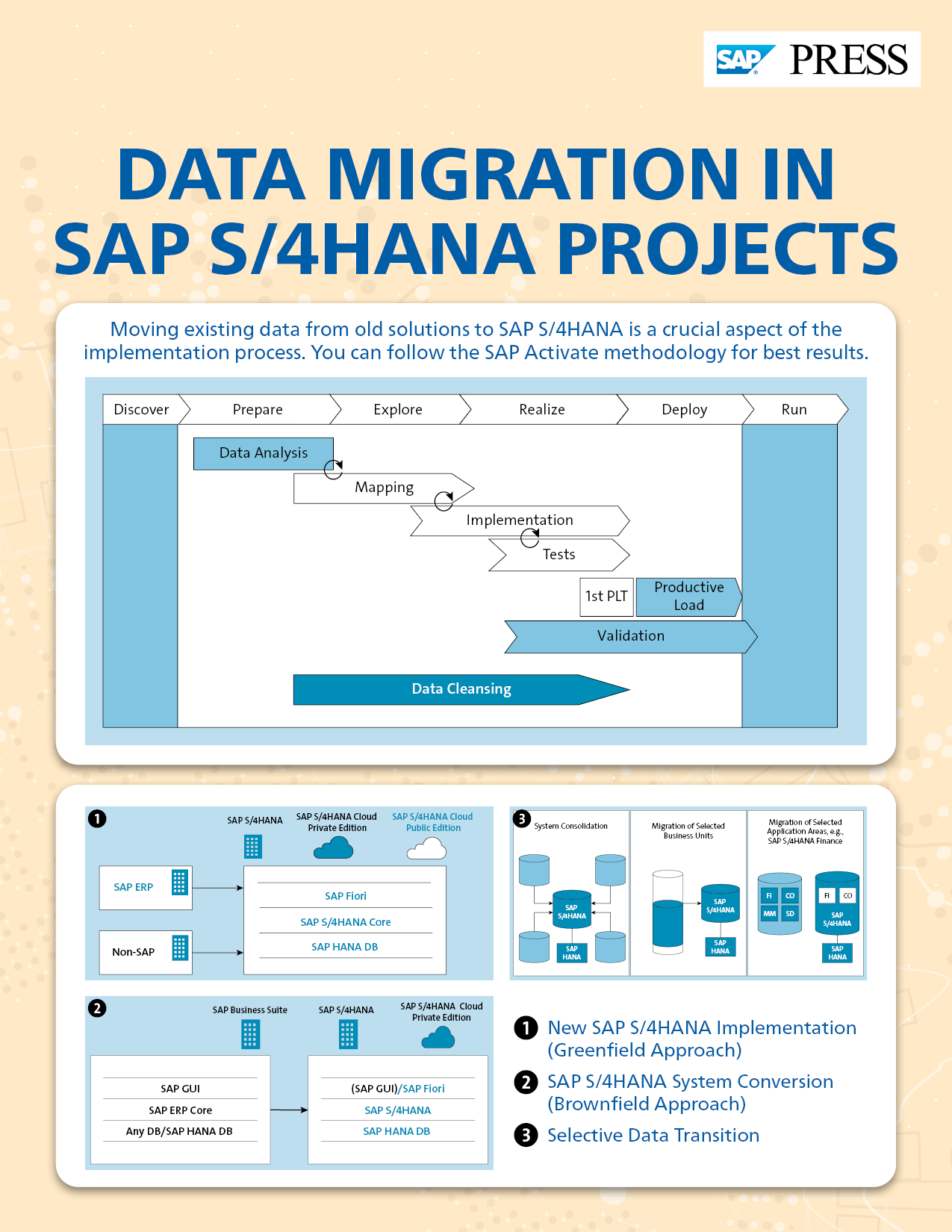Ever since SAP announced that it will not support its SAP ERP business suite after 2027, the transition to SAP S/4HANA has gone from a maybe to a necessity.
While you may think you have ample time to make the switch, it’s never too early to begin your journey. Migration to SAP S/4HANA is essential for improved performance, agility, and innovation. As of the third quarter of 2021, SAP S/4HANA has 17,500 subscribers, and the number continues to grow.
While this figure may seem small, it’s worth noting that each subscriber consists of a large enterprise with an SAP S/4HANA license. Meaning its user base is made up of a vast number of employees already activating its software and enjoying the benefits. For example, SAP S/4HANA offers access to real-time data from every part of the company. The software takes advantage of the cloud to improve performance and boost innovation. Additionally, key resources such as global SAP S/4HANA group reporting are also an integral part of any business strategy.
Embracing SAP S/4HANA can improve your underlying technical structure, by making your business interface user-friendly, functional, and transformative. Due to its improved performance, the interface can successfully manage a hybrid workforce with ease. But now comes the hard part.
This quote from Benjamin Franklin sums up software migration: “By failing to prepare, you are preparing to fail.” Whether you are moving house or moving interface, planning is key.
Let’s take a look at some proven tips to guide your employees through a smooth SAP S/4HANA migration.
Implementing SAP S/4HANA Within Your Business
As companies can choose from three iterations to run SAP S/4HANA, the choice comes down to software needs. Once you have identified your requirements, you can choose the correct platform to move forward.
SAP S/4HANA runs on either on-premise, deployment via the cloud, or a hybrid version of the two. All options have their benefits, but each option depends on your needs.
On-premise deployment stores your data locally. It is cheaper than cloud integration and due to its locality, the deployment is faster to set up. It also provides its users with full control.
The disadvantage of on-premise deployment is that installation is a one-time process. So, if your company requires SAP S/4HANA updates, your team will have to manually install them.
Cloud deployment turns your software into a service. It increases flexibility, scalability, and faster time scalability. It reduces infrastructure costs and users are constantly connected to SAP servers.
With cloud deployment, your business becomes a longstanding client of SAP. Meaning you will automatically receive regular updates and data protection.
Connectivity via cloud communications is crucial to digital transformation. Allowing for easy connectivity between all locations.
The disadvantage of cloud deployment is its cost. You are paying for a subscription service with a complete overhaul of your infrastructure, so as you can imagine this may be costly.
Hybrid deployment lets you integrate premise-to-premise, cloud-to-cloud, and premise-to-cloud. It allows you the flexibility to change as well as the opportunity to embrace new application models.
Defining a Plan of Action
Whether you’re a small business or a large enterprise, laying the groundwork for SAP S/4HANA is essential. Based on the vision that you establish, you can build a preliminary roadmap for your transition process.
It’s important to factor in key decision points within your timeframe. Key points include your go-live date as well as essential task deadlines. Making your staff aware of the benefits that migration can offer will improve productivity. By involving your teams they feel included rather than kept in the dark. Sticking to a plan minimizes the number of surprises you may encounter. By creating a step-by-step timeline, you can better prepare to focus on the tasks at hand.
In this step, you will also need to consider your IT landscape and the SAP HANA deployment infrastructure. Ask yourself these questions before moving forward:
- Which SAP S/4HANA deployment option functions meet your IT and business needs?
- What system components should you migrate to SAP S/4HANA?
- When will you mitigate these individual components?
Once you have answered these questions and devised a timeframe, you and your team are ready for the implementation process.
Put Together an Efficient Team
The task of a system migration initiative is a daunting one. Complicated projects such as SAP S/4HANA implementations come with serious risks as well as significant costs.
Imagine your clients asking what is a toll free number? It would be up to your team to make them aware in the most efficient way possible. This is the same with an SAP S/4HANA migration. Knowledge is necessary to move your process forward.
Many companies have tried and failed to install SAP S/4HANA within their organization. Yet there are ways to remove these barriers to ensure your migration is smooth and functional.
The problem with these failed integrations is timing. Many companies have new software forced upon them through mergers or changing business needs. As a result, these changes are imposing rather than strategic.
Understanding why migration is beneficial is one of the key features of building an effective team. If you all share an end-to-end view of your process, your integration will have more chances of success.
When assembling your team, your members must have the necessary expertise to negotiate the task at hand.
Communication is an essential part of the process; a conference room setup or day-to-day briefings would be necessary to progress effectively.
Your implementation’s success can be attributed to your staff. And with so many specialists involved in SAP S/4HANA, your whole team will need to be consistently updated.
Determine When to Start Migrating
The success of SAP S/4HANA projects depends on your preparation. You must provide clear timeframes to your staff with their anticipated workloads. Once you have collected this information, you will be able to propose a start date for migration.
This is when feedback from your staff becomes essential. Business solutions such as BYOC policy (bring your own carrier) ensure communication is possible all over the globe. So, any potential adjustments can be reported and noted.
Planning your transition is essential. SAP determines that it can take twelve to eighteen months to migrate from SAP ERP to SAP S/4HANA, and in some cases, it can take even longer.
This estimated time consists of in-house testing but it doesn’t take into account things that could go wrong such as any delays that may occur. So, it is best to start your transition as early as possible to prevent setbacks.
This is when you can consult your plan of action to determine your ideal start date, as well as dates for targets to be met in the future.
Choose Between Brownfield, Greenfield, and Selective Data Transition
Brownfield, greenfield, and selective data transition migrations refer to the type of upgrade your system undergoes. Which migration option you choose depends on your business needs and resources.
The Brownfield Approach
The brownfield approach uses parts of your current system while also introducing new UI features through SAP S/4HANA. This approach allows you to keep your historical data as well as its aesthetic qualities.
This is a higher-risk implementation, as your existing infrastructure has likely been in place for some time. During this time your system may have been customized to include any new business practices.
These customizations can be problematic when installing an SAP S/4HANA on-premise system.
The big advantage of the brownfield approach is that it is cost-effective. It also allows you to keep what you liked from your previous system and bring it to your new and improved system.
Whereas the brownfield approach incorporates past features, it may experience far more functionality issues because of this.
The Greenfield Approach
The greenfield approach is more of a “system restart” for your current infrastructure. It sets up a new SAP S/4HANA system and is the preferred method for new SAP customers.
This migration is suitable for companies with systems that aren’t customized. Being able to start anew entirely means previous problems and issues are left behind.
The greenfield approach is easy to navigate as well as being functional. As an AI outline generator saves time via functionality, the greenfield approach saves time via its operational capabilities.
The disadvantage of this approach is it requires more financial investment than the others.
The Selective Data Transition Approach
Selective data transition is the best of both worlds. It’s a new system designed to combine the benefits of the previous two structures.
Selective data transition makes sure no data from the previous system is lost. Its main focus is ensuring your SAP system is viable for the future.
Next Steps
Implementing a smooth and successful SAP S/4HANA migration can be a positive experience. With time and preparation, your entire company can seize the opportunity to digitally progress. Even though there is nothing simple about software migration, it should be seen as an opportunity.
By upgrading your software and deciding what approach is best, you can increase your business landscape as well as its agility and productivity. Enterprise migration is the future, so it’s best that you and your team are ready.
This post was originally published 9/2022.






Comments